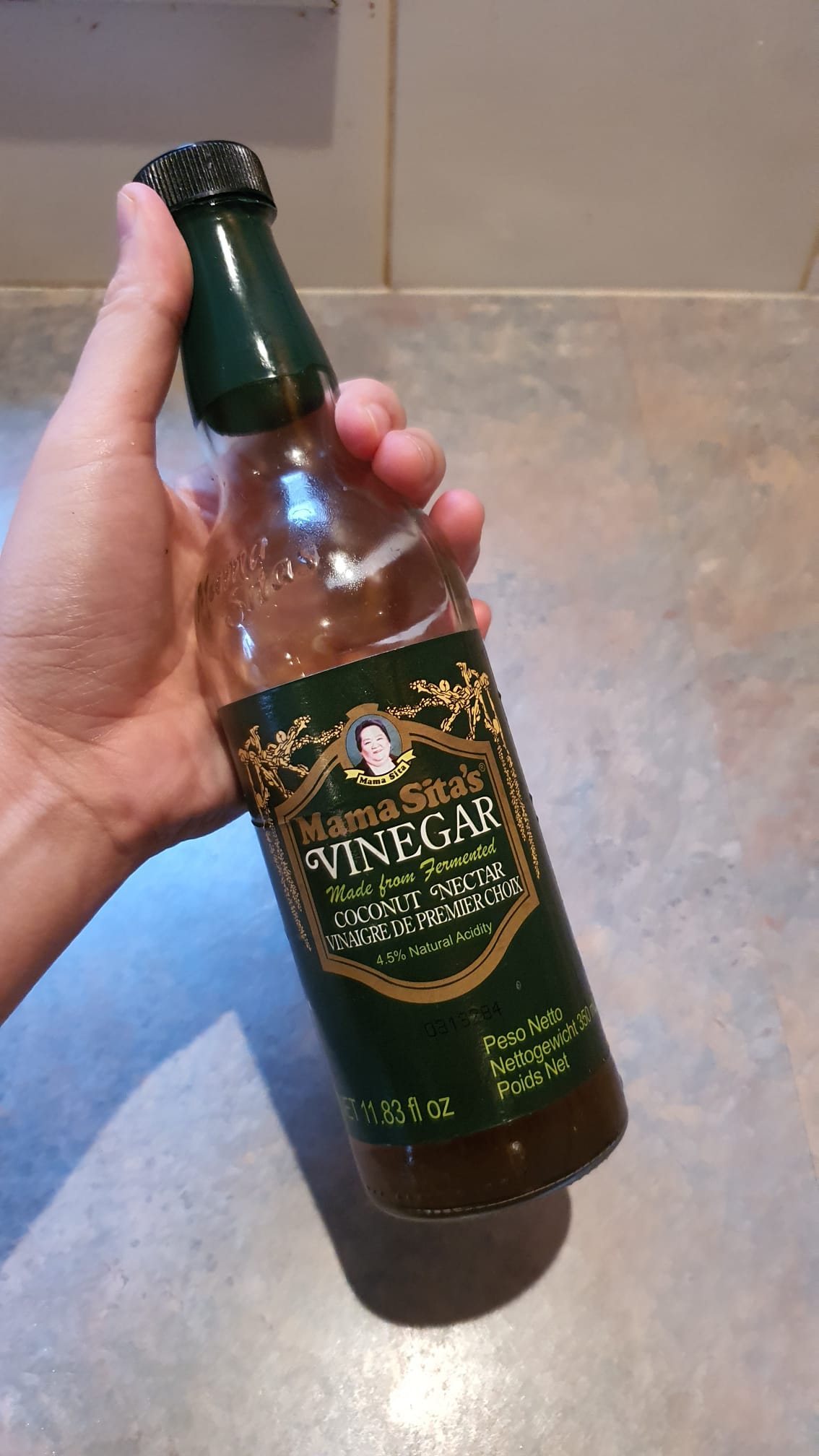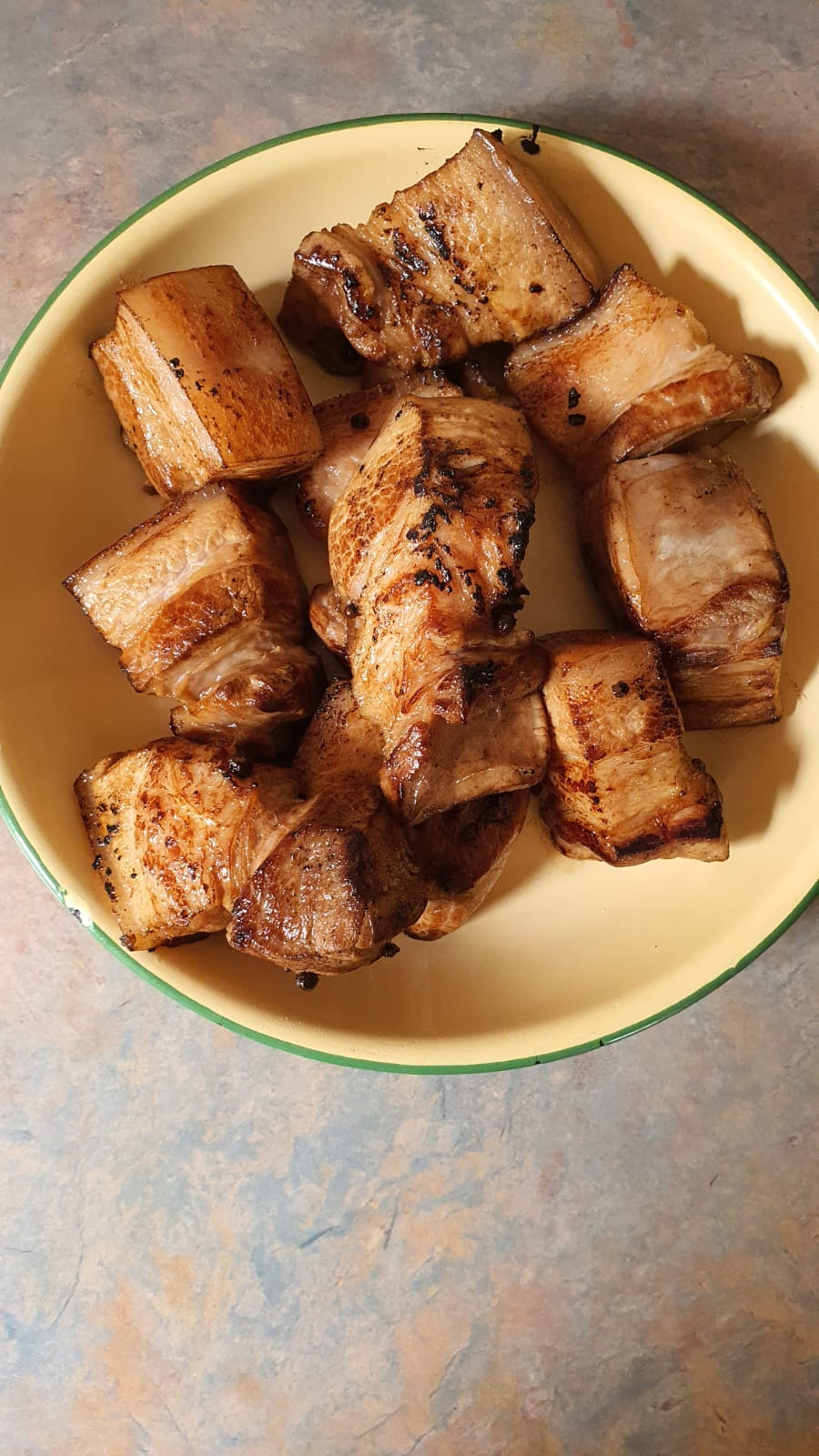Hi everyone! I’ve been away for about a month in Europe, so it is so nice to be back, conversing with all of you via email.
Just a bit of an update: I’ve moved my content from the website to this newsletter as members were having difficulty searching for recipes on the website. With a better search engine and an index, hopefully you would have a more seamless experience. Two, by sending recipes direct to your inbox, I hope it makes it more convenient to refer to them and cook local. (If you were a pre-existing member, your membership has already been transferred here.)
Singapore Noodles is a member-supported initiative. By upgrading to the paid version of this newsletter, you directly support everything that goes into this platform, receive member-exclusive content, and get to participate in our virtual cookalongs! I really hope to see you there:
Back to the trip! One of the nicest things we ate was ‘codornices a la vinagreta’ (quail cooked in vinegar) at an unassuming tapas bar in Spain. It cost under 6 euros and ended up being utterly memorable… there’s something to be said about meat stewed with vinegar, peppercorns, garlic, and onions.
It was so reminiscent of a dish I am familiar with - adobo. I was raised by a Filipino helper, and later in life when I asked why she never cooked much Filipino food for us, she laughed and said she felt we wouldn’t have enjoyed it. She did cook us one dish though - adobo. The thing that stood out to me then was the strong whiff of vinegar. I’ve always loved acidic foods, but having a dish where vinegar is firmly in the foreground was new.
The origins of adobo
Just like rendang, where the term refers to both a dish and a technique, ‘adobo’ can be used both as a noun and a verb. It refers to the act of cooking something in vinegar, a technique locals were practising even before the arrival of the Spanish in the Philippines. It began as a practical way to preserve food in a tropical climate without refrigeration, but people soon developed an affinity for the flavour of vinegar.
Later, when the Spanish arrived in 1500s, they described local dishes in their own language and christened the vinegary dish as ‘adobo’ based on the Spanish word ‘adobar’, meaning ‘to pickle or brine’. The name stuck, and the original indigenous name of the dish has since faded from history.
Given that there are so many versions of adobo in the Philippines, there’s no such thing as a textbook adobo. Every family cooks it differently based on their personal preference. The following is just how I do it at home.
Step one: procure your ingredients.
At its heart, adobo is a simple dish that relies on the marriage of a few basic ingredients, nearly all of which you can obtain from your local supermarket. Here are the two key ingredients in the adobo that I make:
Soy sauce - It is said that the most traditional form of adobo is white adobo (adobong puti). This version earns its name from being made without soy sauce; its salinity comes solely from salt. The ubiquity of soy sauce in adobo was only a result of Chinese traders introducing the ingredient to the Philippines when they settled in the country. Encouraged by some Youtube comments, I went ahead and got myself a bottle of Silver Swan, a Filipino brand of soy sauce which reminds me of Maggi sauce in flavour!
Vinegar - Filipinos on Reddit seem not to be fussed about which to use. I got coconut vinegar from my Filipino grocer, which I find more rounded and slightly sweeter in flavour than apple cider vinegar. Datu Puti also seems to be a very popular brand.
Step two: marinate your meat.
You can make adobo with any protein, but most of the time, I make mine with pork belly or chicken. Some recipes marinate their meat, others don’t. In my opinion, marinating does not make or break the dish because you are slow-cooking the meat with ingredients that pack a punch. I do it mainly because it lends gorgeous colour when I sear my meat later.
I’ve tried multiple adobo recipes on the web and, most of the time, the marinades are too acidic or salty for my taste. Interestingly, someone on Reddit says, “real Filipino adobo here in Manila would be really salty because we eat it with heaps of rice, to save on the cost of protein.” Bryan Koh, author of Milk Pigs & Violet Gold, gave me wise advice, “The best way to season adobo, is to do it lightly, and then let the adobo sit for a day. The flavours change quite significantly.”
What I’m inclined towards is a combination of soy sauce, 7-up (a surprisingly common ingredient in Filipino cooking), and vinegar. The 7-up not only acts like a buffer for the saltiness and acidity, but also tenderises and sweetens up the meat nicely.
To this, I add:
Some lightly crushed black peppercorns - I prefer this over ground pepper because we like to actually bite into the peppercorns as we eat the adobo. But if you like, you can put them in a tea filter bag before adding to the marinade.
Dried bay leaves
Whole cloves of garlic - lightly crushed but unpeeled because I enjoy eating fat cloves of soft, mellow garlic in the finished dish.
Large chunks of pork belly, or a chopped up chicken
Let the chicken and pork marinate overnight in the fridge, or an hour at the very least.
Step three: brown your meat.
While there are those who don’t brown their meat at all, I’m inclined to, for depth of flavour. According to Bryan, there are several ways to brown meat for adobo. Some people brown their meat before braising it. Others simmer until all liquid evaporates, then add oil to the pan, and heat it up so that the meat deep-fries. There’s a particularly intriguing-sounding method where the tender meat is removed from the pot, fried till crispy, then re-introduced to the braising liquid. “Filipinos love that contrast. They love that thick, viscous vinegary sauce and crusty exterior of the meat, which you don’t really get when you brown your meat, and then braise it.”
I personally like searing my meat before braising - it browns terrifically from the sugars in the 7-up - because it is fuss-free and straightforward for everyday cooking. Any leftovers would be fried till crispy the next day for fried rice anyway in my home.
Step four: adding the aromatics.
Into the rendered pork fat go chopped garlic. One thing I find unique about Filipino cooking is how central browning of garlic seems to the cuisine. While other cuisines might brown onions first then add garlic, in the Philippines, the order seems to be reversed. When the garlic loses its raw edge and turns golden brown, I add onion and chilli padi. I’ve made adobo with and without browning the garlic, and I can tell you that this step subtly takes the adobo to the next level. (I learnt this tip from watching Apple cook her adobo.)
Step five: braising.
When the onion turns translucent, I return the pork, the marinade, and some water to the pan. On occasion, I add a touch of coconut cream for a velvety mouthfeel, a la Angela Dimayuga.
Simmer until cooked and tender to your liking. Because I cook my pork in a wide pot, by the time the pork is tender, the liquid would have been reduced to a sauce… perfect for drizzling over freshly steamed rice. It’s always good to make more adobo, because there are so many ways to repurpose leftovers. You can shred it, mix it into the gravy, and use it as a filling for buns. I’ve seen people use the shredded meat as dumpling filling too. But the most satisfying way to enjoy leftover adobo for me is adobo fried rice… HANDS DOWN. But that’s a newsletter for another day! I hope you give this recipe a go.
Pork belly adobo
Serves 4
800g pork belly, cut into large chunks (or use a chopped-up chicken)
45g vinegar, or to taste (I use coconut vinegar or apple cider vinegar)
45g soy sauce, or to taste (I use Silver Swan soy sauce)
190g 7-up
5g black peppercorns, lightly crushed
25g unpeeled garlic cloves, lightly crushed
4 bay leaves
1 tbsp oil
20g peeled and chopped garlic cloves
75g peeled and diced red onion
1-2 chopped chilli padi (optional)
500g water
Combine the meat, vinegar, soy sauce, 7-up, black peppercorns, garlic, and bay leaves in a large bowl. Toss well, then cover and marinate overnight or at least 1 hour. The next day, pour the contents of the bowl through a colander set over a pot. Set a wide round pot over medium heat and add the oil. Working in two batches, sear the pork belly on all sides until well-caramelised. Remove from the pot.
To the rendered pork fat in the pot, add the garlic. Turn the heat to low, stirring the garlic while scraping the pan to dislodge any caramelised bits on it. When the garlic loses its raw edge and begins to turn golden (but not dark brown), add the onion and chilli. Fry briskly, until the onion turns translucent.
Return the pork, reserved marinade, and water to the pan and bring to the boil. Simmer for 2 hours, or until the pork is fork tender and the sauce is reduced. If you’d like a thicker, more seasoned gravy, you can remove the pork from the pot and simmer the braising liquid on high heat to further reduce it. Taste and adjust with more vinegar or soy sauce if desired. Eat with steamed rice (and save some to make fried rice - adobo fried rice is superb!!).











